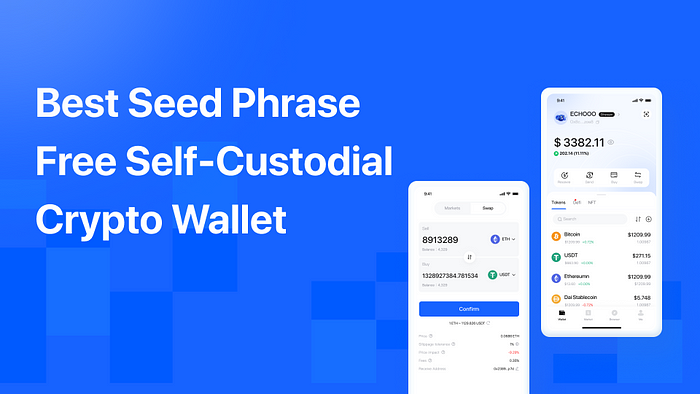The inevitable Gas fee
No matter which chain you are a resident user of, Ethereum, BNB Smart Chain, or other public chains with many users, You can’t leave the exchange with the required Gas fee. Gas fee refers to the amount of computing required to perform a specific operation on a blockchain network. Gas fees affect not only the speed of transactions but also the success rate of transactions.
If we keep too little gas fee, it may cause the transaction to fail or get stuck, because each transaction on the blockchain requires computing resources to execute, and each transaction needs to pay for the Gas fee. Since the Gas fee has to buy a certain amount of native tokens, this also brings us to the question of how many native tokens should I keep in my wallet.
The dilemma is caused by the fluctuating value of native tokens.
The gas fee for each transaction is not fixed and can vary depending on the level of network congestion and the fluctuation of coin prices. However, coin prices are highly volatile.
If a large number of native tokens are kept for trading, sudden events can cause violent fluctuations in coin prices, which may result in significant asset losses when prices drop drastically. For instance, the Solana chain, which was a popular public chain a few years ago, once reached a peak of $249 (11th August 2021), but its current price is only $25.3 (4th April 2023), which represents an 88.5% decrease from its peak. If a large number of Sol tokens had been purchased to trade on the Solana chain at that time, it would have caused significant asset losses for users at the end of the bull market.

If the amount of native tokens left for trading is too small, there will be other problems. For example, when the market is hot and a large number of users flood into the blockchain for transactions, or when certain projects release airdrop information, attracting a large number of users to apply for interaction. In these situations, the blockchain network will experience short-term congestion, leading to tight block space, and Gas fees will soar. For example, Arbitrum, a hot layer2 leading project a few months ago, experienced a sudden surge in Gas fees on Arbitrum when there was news of an airdrop, which once exceeded the Ethereum mainnet. Or the ongoing zkSync Era, after the release of coins on Arbitrum, the Gasfee on zkSync Era also soared to around $4, far exceeding the current $1 of ETH mainnet. The Gas fee that was enough to trade for a certain number of times may suddenly become unable to trade or seriously reduced the number of trades. In this situation, if you need to face sudden events and the gas fee left is not enough, it will result in an inability to trade or even transaction failure, and in the case of urgently needing interaction, you will be forced to import from other wallets and consume the high gas fee at this time, which is really unbearable.
Leaving too much is not feasible, leaving too little is not feasible either. This dilemma forces us to look for a new interactive function to deal with this situation.
To this end, the Echooo wallet has added a Gasless feature.
What is Echooo?

Echooo is the first hybrid architecture wallet (EOA+CA) that does not require mnemonic words and has been listed on Google Playstore. By using algorithms to encrypt private keys, Echooo stores encrypted files in the cloud, ensuring the safety of user assets even in case of theft. Additionally, Echooo utilizes multi-signature and social recovery mechanisms to ensure the safety of user assets. Registration is completed simply by entering an email address or phone number, and Echooo also supports third-party platform account login, allowing users to seamlessly transition from Web2 to Web3 experiences on familiar platforms.
What is Gasless?
Gasless trading is a new type of transaction that allows users to perform Meta-Transaction without using native tokens of the blockchain. The implementation of Meta-Transaction involves transferring the transaction fee from the transaction initiator to a third-party payment method. This method allows users to trade without having native tokens on various public chains.
Gasless does not mean that there is no need to pay the Gas fee, but rather that users are not forced to understand the concept of Gas and do not need to purchase various native tokens in advance to pay for gas. In Meta-Transaction, the user’s transaction is actually executed by another account that represents them in paying a Gas fee. This account is called a “relayer” and can be a contract or an ordinary Ethereum account. The relayer receives the transaction from the user, signs it with their private key, and then submits it to the network for mining. The user’s transaction is basically wrapped in the second transaction that pays for the Gas fee, allowing users to interact with contracts without paying the Gas fee themselves. The principle is shown in the figure.

Echooo wallet provides users with a designated portion of stablecoins for payment. Stablecoins, as a value-stable gas, can effectively solve the above problems. In the case of being designated as a stablecoin, there is no need to consider asset risks and gas fee spikes caused by sudden events, which brings us a more convenient blockchain
The future expected by Echooo
In the future, the Echooo platform considers setting any valuable token as a Gas fee. This will consume some of the tokens with poor liquidity that we obtain in daily transactions, thus making full use of these assets. This measure also helps to revalue poor-quality assets by consuming them as Gas fees and helping users bring them back to value.

For More Visit: Twitter, Google Playstore, Website
















